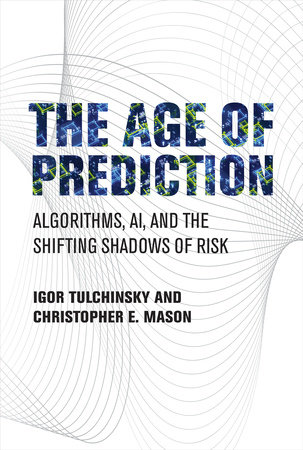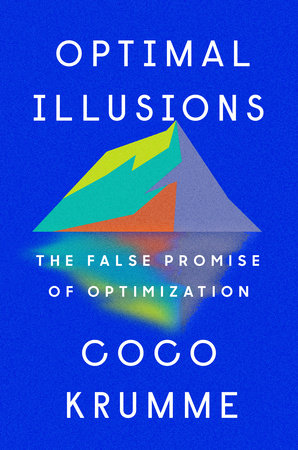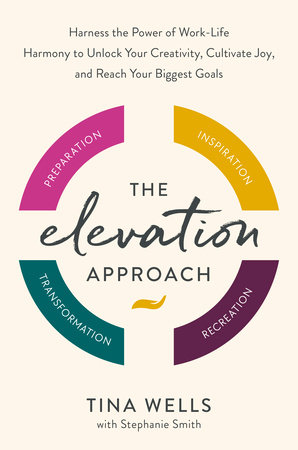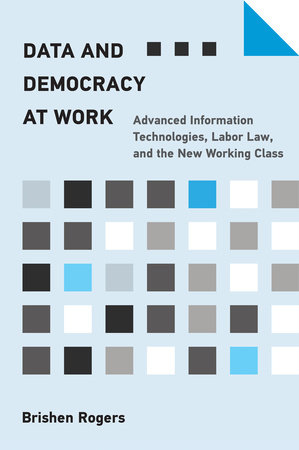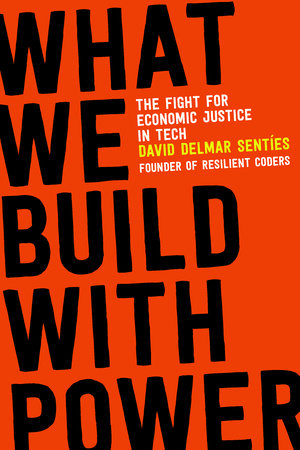Quick Summary
One Sentence Summary
“The Age of Prediction” by Christopher E. Mason and Igor Tulchinsky is a forward-thinking exploration of how data-driven prediction models are reshaping our understanding of the world.
Big Idea
The central thesis of the book is that predictive analytics and data science are fundamentally altering every aspect of human life, from healthcare and finance to climate change and personal decision-making.
Five Key Ideas
- The Evolution of Predictive Models: Discussion on the historical development of predictive models, from basic statistical methods to complex AI algorithms.
- Impacts on Healthcare: Exploration of how prediction models are revolutionizing personalized medicine and disease prevention.
- Financial Markets and Prediction: Analysis of how algorithmic trading and predictive analytics are changing the landscape of financial markets.
- Climate Change and Environmental Forecasting: Insights into how predictive models are used in understanding and combating climate change.
- Ethical and Societal Implications: Examination of the ethical dilemmas and societal impacts arising from the reliance on predictive models.
Actionable Advice
The book suggests embracing data literacy as a crucial skill, encourages critical thinking about the role of AI in decision-making, and advocates for ethical considerations in the deployment of predictive models.
About the Author
Christopher E. Mason is an acclaimed genomics researcher and professor, known for his work in computational biology, while Igor Tulchinsky is a renowned figure in the world of finance and algorithmic trading, bringing a unique perspective to the intersection of data science and practical applications.
Read Next
For further reading, consider:
- “Superforecasting: The Art and Science of Prediction” by Philip E. Tetlock and Dan Gardner, for insights into the art of accurate prediction.
- “Predictive Analytics: The Power to Predict Who Will Click, Buy, Lie, or Die” by Eric Siegel, for a deeper understanding of how predictive analytics is applied in various industries.
- “The Signal and the Noise: Why So Many Predictions Fail—but Some Don’t” by Nate Silver, offering a perspective on the challenges and successes in the world of prediction.
In Depth
The Evolution of Predictive Models
Predictive models have come a long way. What started as simple statistical tools has morphed into intricate AI systems. This evolution is a key theme in “The Age of Prediction.” The journey from basic analytics to complex algorithms mirrors our growing reliance on data.
Early models were straightforward. Think of weather forecasting. It used to be about observing clouds and winds. Now, it’s supercomputers crunching global data. The book dives into how these basic methods laid the groundwork for today’s AI.
The leap to modern AI is huge. It’s not just more data; it’s about smarter ways to analyze it. Machine learning, a branch of AI, learns from data, identifying patterns we can’t see. It’s like teaching a computer to think.
One detailed example is chess. The authors describe how AI evolved here. Initially, computers played chess using predefined moves. Then came machine learning. Algorithms like Deep Blue and AlphaZero didn’t just memorize; they learned strategy by playing millions of games against themselves. This shift is monumental. It’s not about raw data; it’s about understanding and learning from it.
The book quotes:
“The leap from data to knowledge is where the magic happens. In chess, as in life, it’s about learning from each move to predict the next.”
This quote captures the essence of predictive models. It’s learning and adapting, not just storing information.
Healthcare is another area where this evolution shines. Early predictive models in healthcare were basic risk calculators. Today, AI predicts patient outcomes, personalizes treatment plans, and even assists in complex surgeries. The transition from simple risk assessment to personalized medicine reflects this evolution.
Financial markets have seen similar shifts. Algorithms once used for basic trend analysis now predict market movements. They analyze news, social media, and economic indicators in real-time. This isn’t just faster processing; it’s a whole new level of understanding market dynamics.
The ethical implications are significant. As models become more sophisticated, so do the questions about their use. The book doesn’t shy away from this. It discusses the balance between leveraging AI for good and protecting individual rights.
In summary, predictive models have evolved from simple statistical methods to AI-powered tools. This evolution mirrors our journey into a data-driven world. It’s a story of how we went from basic number crunching to teaching machines to learn and predict. Each step in this evolution has reshaped how we see and interact with the world.
Impacts on Healthcare
Predictive models are revolutionizing healthcare. It’s not just about treating illnesses anymore; it’s about foreseeing them, personalizing treatments, and improving life quality. This change is profound and far-reaching.
Take genetic testing. It used to be a futuristic idea. Now, it’s common practice. Predictive models analyze genetic data to forecast health risks. This isn’t just about diagnosing diseases; it’s about predicting them before they even occur.
A detailed example is cancer treatment. The book describes how AI models analyze genetic mutations in cancer cells. This isn’t just identifying cancer; it’s understanding its unique characteristics in each patient. This leads to tailored treatments, a concept unimaginable a few decades ago.
“In the realm of cancer treatment, predictive models are not just a tool; they are a game changer. They transform patient care from a one-size-fits-all approach to a tailored, personalized strategy.”
This quote sums up the impact. We’re moving from generic treatments to personalized care, thanks to predictive models.
The impact isn’t limited to treatment; it’s also about prevention. Wearable devices track heart rates, sleep patterns, and more. Predictive models analyze this data, flagging potential health issues before they become serious. This proactive approach is a significant shift from traditional reactive healthcare.
Mental health is another area benefiting from predictive models. AI tools analyze speech patterns and behavioral data to identify early signs of conditions like depression or anxiety. This early detection can be life-saving.
Predictive models also aid in drug development. By simulating how drugs interact with the human body, AI accelerates the discovery of new medicines. This reduces time and cost, making treatments accessible sooner.
The ethical concerns are addressed too. As healthcare relies more on AI, questions about privacy and data security arise. The book delves into the need for balancing technological advancement with ethical responsibility.
In summary, predictive models in healthcare are a paradigm shift. They’re changing how we approach health, from prevention to treatment. It’s a move towards a future where healthcare is more effective, personalized, and proactive.
Financial Markets and Prediction
In the world of finance, predictive models are changing the game. It’s no longer just about understanding market trends; it’s about anticipating them. This shift is a big deal in an industry where seconds can mean millions.
Algorithmic trading is a prime example. It’s not just about executing trades fast; it’s about predicting market movements before they happen. The book dives into how algorithms use historical data, market indicators, and even social media trends to forecast market changes.
One detailed case from the book is the use of AI in hedge funds. These funds now employ complex algorithms to analyze vast amounts of data, far beyond human capacity. One algorithm, for instance, predicts stock movements based on news articles and financial reports. It’s not just scanning data; it’s interpreting it, finding patterns, and making predictions.
“In the high-stakes world of finance, predictive algorithms are the new crystal balls. They see patterns in chaos, turning data into profitable predictions.”
This quote captures the essence of how AI is transforming finance. It’s about turning a deluge of data into actionable, profitable insights.
The impact goes beyond trading. Risk management is another area where predictive models shine. They assess loan risks by analyzing borrower data, reducing defaults and bad debts. This isn’t just about avoiding risk; it’s about understanding it in a nuanced way.
Predictive models also help in detecting fraud. By analyzing transaction patterns, they spot irregularities that might indicate fraudulent activities. This proactive approach is a significant leap from traditional reactive methods.
The book doesn’t ignore the challenges. With great power comes great responsibility. There’s the risk of over-reliance on algorithms, which can lead to market volatility. Ethical considerations, like the potential for biased algorithms, are also discussed.
In summary, predictive models are revolutionizing finance. They’re not just tools for analysis; they’re foresight mechanisms, transforming how financial markets operate, manage risk, and ensure security.
Climate Change and Environmental Forecasting
Predictive models are key players in tackling climate change. They’re not just crunching weather data; they’re shaping our response to one of the biggest challenges of our time.
One standout example is climate modeling. These models simulate Earth’s climate, predicting changes years ahead. They factor in everything from ocean temperatures to greenhouse gas emissions. The detail is staggering.
A specific case discussed in the book involves predicting sea level rise. Scientists use AI to analyze data from satellites, ocean buoys, and historical records. This isn’t just about measuring sea levels; it’s about understanding how factors like melting ice caps and warming oceans interact. It’s complex, and AI makes it possible.
“In the battle against climate change, predictive models are our crystal ball. They provide a glimpse into future scenarios, guiding our actions today to avert tomorrow’s crisis.”
This quote sums up the role of predictive models in environmental science. They’re not just tools for understanding; they’re guides for action.
Predictive models also help in disaster preparedness. They forecast hurricanes, floods, and wildfires with increasing accuracy. This forecasting saves lives by allowing for earlier evacuations and better resource allocation.
Beyond disaster response, these models guide long-term planning. Cities use them to design infrastructure resilient to future climate scenarios. It’s proactive, not reactive – a fundamental shift in how we plan for the future.
The book also addresses the limitations and challenges. Predictive models are powerful, but they rely on accurate data. Incomplete or biased data can lead to flawed predictions. There’s also the challenge of communicating complex model outputs to policymakers and the public.
In essence, predictive models are a crucial tool in our environmental arsenal. They help us understand and prepare for climate change, guiding our efforts to protect the planet for future generations.
Ethical and Societal Implications
The rise of predictive models isn’t just a technical revolution; it’s an ethical and societal one too. These models shape decisions affecting millions, raising serious questions about their impact on society.
A focal point in this discussion is the use of AI in criminal justice. The book delves into the use of predictive policing algorithms. These tools analyze crime data to forecast where crimes might occur or who might commit them. While this sounds efficient, it’s fraught with ethical dilemmas.
One specific example is the risk assessment tools used in courts. These algorithms predict the likelihood of a defendant reoffending. The book highlights a case where such a tool influenced sentencing decisions. This raises concerns about fairness and bias, as these algorithms can perpetuate existing prejudices.
“As we entrust AI with life-altering decisions, we must grapple with the ethical ramifications. Predictive models hold power, but with power comes the responsibility to ensure fairness and avoid bias.”
This quote underscores the ethical burden of predictive models. They’re powerful tools, but their use must be tempered with a strong ethical framework.
The book also talks about privacy concerns. With the increasing use of personal data in predictive models, privacy invasion becomes a real risk. This includes everything from healthcare data to online shopping habits. Balancing the benefits of predictive analytics with the right to privacy is a tightrope walk.
Another aspect is the societal impact of job automation. AI and predictive models are automating tasks across industries, leading to fears of widespread job loss. The book argues that while automation may eliminate some jobs, it also creates new opportunities and industries.
There’s also the challenge of transparency. Many predictive models, especially those based on deep learning, are often termed as “black boxes.” Their decision-making processes are opaque, even to their creators. This lack of transparency can be problematic, especially in critical applications like healthcare or criminal justice.
In conclusion, the ethical and societal implications of predictive models are as profound as their technical capabilities. Balancing their benefits with ethical considerations, privacy rights, job impacts, and the need for transparency is crucial for their responsible and equitable use.
Actionable Advice
- Embrace Data Literacy: Understand the basics of data analysis and predictive modeling. It’s crucial in a data-driven world.
- Stay Informed: Keep up with the latest developments in AI and predictive analytics. It impacts everything from your job to your personal life.
- Practice Ethical Use: Always consider the ethical implications of using predictive models, especially regarding privacy and bias.
- Develop Critical Thinking: Don’t take predictions at face value. Question the data sources, methods, and potential biases.
- Learn About AI and Machine Learning: Basic knowledge of these fields helps in understanding how predictions are made.
- Be Proactive in Privacy: Protect your data. Be aware of what data you share and how it can be used.
- Adopt a Balanced View: Understand that predictive models are tools, not crystal balls. They have limitations and should be used judiciously.
- Advocate for Transparency: Demand clarity on how predictive models are used in decision-making, especially in public sectors like healthcare and justice.
- Prepare for Change: Stay adaptable as predictive models evolve, impacting careers and industries.
- Promote Responsible AI: Support policies and practices that encourage responsible development and use of AI technologies.
About the Author
Christopher E. Mason is a renowned genomics researcher and professor, known for his groundbreaking work in computational biology. His research focuses on genetics, epigenetics, and the biotechnological applications of DNA sequencing. Mason has been pivotal in advancing our understanding of the human genome and its impact on health and disease. He’s a proponent of using genomics for personalized medicine and exploring the genetic basis of human adaptation. His work extends to space biology, studying the effects of space travel on human genetics. Mason’s beliefs center around the potential of genomics to revolutionize medicine and improve global health. He advocates for ethical and responsible use of genetic data and champions open-access genomic databases for research. His engaging teaching style and public speaking have made genomics accessible to a broader audience. Mason’s work exemplifies a blend of scientific excellence and a commitment to ethical research, aiming to harness the power of genomics for the betterment of humanity.
Read These Next
You might like these similar books
- “Superforecasting: The Art and Science of Prediction” by Philip E. Tetlock and Dan Gardner
- “Predictive Analytics: The Power to Predict Who Will Click, Buy, Lie, or Die” by Eric Siegel
- “The Signal and the Noise: Why So Many Predictions Fail—but Some Don’t” by Nate Silver
- “Data Science for Business: What You Need to Know about Data Mining and Data-Analytic Thinking” by Foster Provost and Tom Fawcett
- “Weapons of Math Destruction: How Big Data Increases Inequality and Threatens Democracy” by Cathy O’Neil
FAQ
Q: What is “The Age of Prediction” about?
A: The book explores how predictive models and data science are transforming various aspects of life, from healthcare to finance.
Q: Who should read “The Age of Prediction”?
A: It’s ideal for anyone interested in data science, AI, and their implications in real-world scenarios.
Q: Does the book require prior knowledge of data science?
A: No, it’s written for a general audience, though some familiarity with basic data concepts might enhance understanding.
Q: What sectors does “The Age of Prediction” cover?
A: It covers multiple sectors, including healthcare, finance, environmental science, and the societal impact of predictive models.
Q: Are there practical examples in the book?
A: Yes, the book includes detailed examples, like the use of AI in cancer treatment and algorithmic trading.
Q: Does the book discuss the ethical implications of predictive models?
A: Yes, it delves into ethical considerations, particularly in areas like privacy, transparency, and societal impact.
Q: Is “The Age of Prediction” suitable for academic purposes?
A: Yes, its detailed analysis of predictive models makes it a valuable resource for students and researchers in relevant fields.

